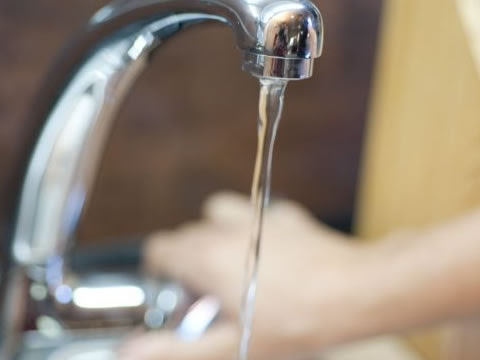Effective Techniques for Overcoming Low Water Pressure in Your Home
Effective Techniques for Overcoming Low Water Pressure in Your Home
Blog Article
Each person may have their unique rationale in relation to Low Water Pressure in the House?.

Low tide stress in your home can be an irritating issue, impacting whatever from showering to cleaning meals. If you're experiencing weak water circulation, there are numerous feasible reasons and remedies to discover. In this overview, we'll go over common reasons for low tide pressure and sensible actions to address the concern successfully.
Introduction to Low Tide Stress
Low tide pressure takes place when the flow of water from your taps, showers, and various other fixtures is weak than common. This can make daily jobs a lot more tough and much less reliable. Recognizing the sources of low water stress is crucial to locating the right option.
Typical Causes of Low Tide Pressure
Faulty Pressure Regulatory Authorities
Pressure regulators are responsible for preserving constant water stress in your house. If they malfunction, it can cause low tide stress or irregular flow throughout your house.
Municipal Water Issues
Occasionally, the issue lies outside your home. Local water supply problems, such as main line leakages or maintenance work, can briefly lower water stress in your location.
Pipeline Obstructions
In time, pipes can end up being clogged with mineral deposits, debris, or particles, restricting the flow of water. This is a typical concern in older homes with galvanized steel pipelines.
Deterioration
Deterioration within pipelines can lead to leaks and reduced water pressure. Rust buildup can tighten water circulation, especially in maturing plumbing systems.
Exactly How to Diagnose Low Tide Stress
Inspecting Pipes
Check noticeable pipes for signs of leaks, corrosion, or clogs. Take notice of any type of unusual sounds, such as knocking or rattling pipes, which could indicate issues within the plumbing system.
Consulting with a Plumber
If you're not able to identify the source of low water pressure, take into consideration working with a specialist plumber to carry out a thorough assessment. They can identify underlying issues and suggest appropriate remedies.
Checking Taps and Components
Begin by testing the water stress at various faucets and components throughout your home. If the issue is separated to specific locations, it may suggest local issues.
DIY Solutions to Fix Low Tide Pressure
Flushing Water Heater
Sediment accumulation in the hot water heater can limit flow and reduce efficiency. Purging the container occasionally helps eliminate debris and preserve ideal efficiency.
Checking Pressure Regulator
Ensure that the pressure regulatory authority is working properly. Readjusting or changing the regulator can aid recover correct water stress throughout your home.
Cleansing Aerators and Showerheads
Mineral deposits can collect in aerators and showerheads, reducing water flow. Remove and clean up these elements frequently to enhance water pressure.
Clearing Up Clogs in Pipes
For minor clogs, try making use of a plumbing serpent or chemical drainpipe cleaner to clear blockages in pipelines. Beware when utilizing chemicals and comply with security standards.
When to Call a Specialist Plumber
If do it yourself efforts fall short to deal with the issue or if you believe substantial plumbing problems, it's finest to look for aid from a certified plumber. They have the expertise and tools to address intricate concerns securely and efficiently.
Safety Nets to Keep Water Stress
Mounting a Pressure Booster
Take into consideration setting up a stress booster pump to enhance water stress in locations with constantly reduced flow. This can be particularly valuable for multi-story homes or homes with high-demand components.
Tracking Water Usage
Be mindful of water usage routines and avoid ill-using the plumbing system. Basic adjustments, such as astonishing showers and washing lots, can help preserve adequate water pressure.
Normal Upkeep
Arrange routine maintenance for your plumbing system to stop concerns such as corrosion, leakages, and clogs. Attending to small issues early can help prevent more significant repair work later.
Conclusion
Handling low water stress can be irritating, yet recognizing the underlying reasons and carrying out ideal services can restore ideal flow throughout your home. Whether it's cleaning aerators, evaluating pipes, or seeking advice from a plumber, taking positive actions can make sure a stable supply of water for your day-to-day requirements.
FOUR WAYS TO FIX LOW WATER PRESSURE NOW
Turning on a shower or faucet only to find the water comes out in a sad, slow drizzle is never a good feeling. How exactly are you supposed to wash a pan or take a quick shower when it takes 10 minutes just to rinse off a little soap? The good news is that when your water pressure is bad, there's always a cause: typically one that can be easily fixed. Here are some of the most common causes of low pressure and what you can do to fix the issue:
DEBRIS AND MINERAL DEPOSIT BUILDUPS
If you notice low water pressure from just one or two of the fixtures in your house, the problem likely has to do with debris buildup. Water is full of minerals and other debris, all of which can accumulate in your pipes and on your fixtures. This can cause a blockage that affects how much water flows through. To fix this, try filling a small plastic bag with white vinegar, and use a rubber band to hang it around your showerhead or faucet. Let the head of the fixture soak for a few hours, and the vinegar should loosen the deposits.
WATER LEAKS
Leaks are another common cause of low water pressure. If water is flowing out of your plumbing through a hole or crack before it can reach your fixture, the pressure coming out of the faucet or showerhead will be lower. A plumbing professional is your best bet for finding and repairing a leak in your water supply pipes.
Leaks are another common cause of low water pressure. If water is flowing out of your plumbing through a hole or crack before it can reach your fixture, the pressure coming out of the faucet or showerhead will be lower. A plumbing professional is your best bet for finding and repairing a leak in your water supply pipes.
A VALVE ISSUE
If you have low water pressure throughout your home, check your main shut-off valve to make sure it's completely open. You may also want to see if there's a pressure-reducing valve installed. If there is, have a plumber help you adjust the settings to get the pressure you're looking for.
OTHERS USING WATER
Believe it or not, your low water pressure could be caused by your neighbors. If you notice low pressure at certain times of day, it may be because you and the people living next to you have similar schedules - when everyone is showering at the same time, the pressure will be lower in every home. Low pressure throughout the neighborhood may also be caused by an issue with your municipal water supply. If that's the case, call the supplier to see if they're working on the issue.
https://www.rotorooter.com/blog/water-leaking/low-water-pressure-fixes/

I was shown that editorial about 4 Ways to Troubleshoot Low Water Pressure from a friend on another domain. Feel free to take the time to share this article if you liked it. We value reading our article about Low Water Pressure in the House?.
Try Here Report this page